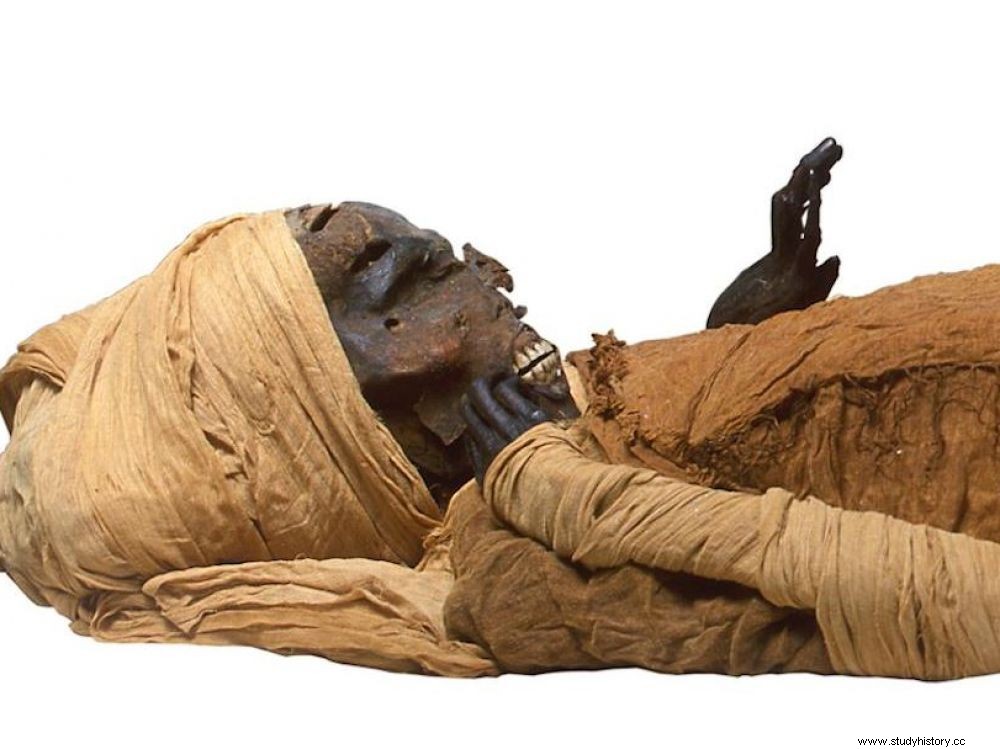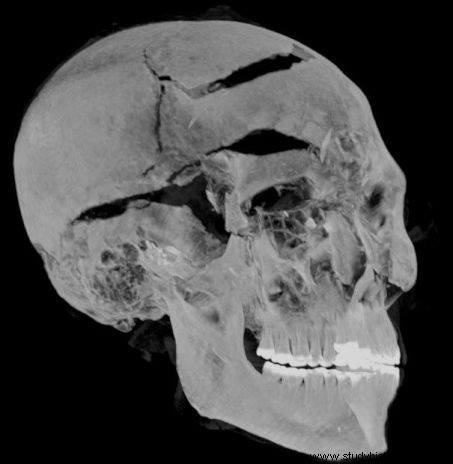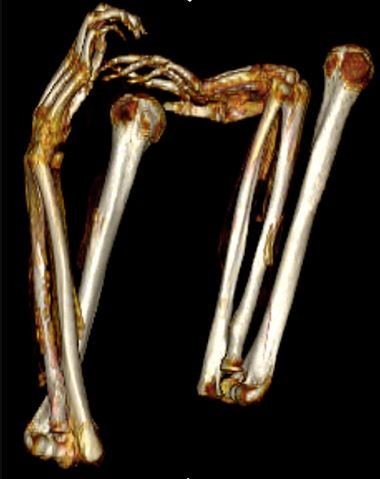The violent death of a 17 th sovereign dynasty has just been confirmed by CT scans. Séqénenrê Taâ II reigned over southern Egypt in the 17th th -XVI e centuries before our era.

The mummy of Pharaoh Séqénenrê Taâ II (XVII th dynasty) first discovered in 1881 and its prominent wounds on the face.
The last moments on Earth of Séqénenrê Taâ II ("He whom Râ made brave" ) were particularly violent. An analysis by computed tomography – a medical imaging technique called CT-scan – of the pharaoh's mummy, discovered in 1881 in a royal hiding place* in Deir el-Bahari, near Thebes (Upper Egypt), indeed shows that his skull was crossed with multiple wounds and his body subjected to torture. These new discoveries are the subject of an article published on February 17, 2021 in the journal Frontiers in Medicine by the famous Egyptologist Zahi Hawass, former Egyptian Minister of Antiquities.
A dark episode in the history of ancient Egypt
The examination of the royal mummy by Dr. Sahar Saleem, of the Faculty of Medicine of Cairo University, has thus revived a dark episode in the history of ancient Egypt. That of the invasion of Egypt by the Hyksos, a foreign dynasty which succeeded in seizing the north of Egypt for a century (1650-1550 BC), and of the revolt of the Egyptians of the South under the crook of Séqénenrê Taâ II at the end of the XVII th dynasty (circa 1558-1553 BCE). From the discovery of the mummy, several scenarios had been evoked to explain his brutal end at the age of about 40:had he died in battle? Had he been the victim of a palace conspiracy? Marks of fatal injuries on the skull had already been noted in 1960 thanks to X-rays, but recent CT scans have made it possible to go further. They allow Zahi Hawass and Sahar Saleem to propose a new hypothesis on the end of this pharaoh. "His deformed hands could be a consequence of his capture on a battlefield, where they would have been tied behind his back, preventing him from protecting his face against blows" , explain the authors of the article.

Scan of the skull of Séqénenrê Taâ II, whose facial wounds confirm the violent death. ©Dr. Sahar Saleem.
At the level of the head, new details have appeared, carefully concealed by the embalmers of the time. These lesions had escaped previous examinations. Their morphology was confronted with the use of various weapons used by the Hyksos and recovered on the site of the current Tell-el-Dabaa, the ancient city of Avaris, center of their authority. In particular an axe, a spear point and three daggers, combat weapons compatible with the cranial traumas revealed. "The deadly attack was aimed at the king's face, presumably to dishonor him, explain the Egyptian archaeologists. The blows were delivered from different angles, coming from several attackers" .

3D scanner image of the upper limbs of the mummy of Séqénenrê Taâ II, with its arms dislocated and bent at the elbows. The deformation of the hands indicate that they were attached at the wrists. Credits:Dr. Sahar Saleem/ Frontiers in Medicine.
The tragic and humiliating end of Séqénenrê Taâ II would have encouraged his successors to continue and strengthen their fight against the Hyksos until they were driven out of Egypt. Accounts of these battles won by Kamosis and Ahmose, the assassinated pharaoh's own sons, were found on the Carnarvon Stele exhumed in July 1954 at Karnak. A tablet that revealed how Egypt got rid of the Hyksos, their northern rivals.
The story also tells that Séqénenrê Taâ II had revolted against the Hyksos occupants after receiving a complaint from their king Apophis 1 st , disturbed in his sleep by the noise made by the hippos in the sacred baths of Thebes… located 800km from Avaris! King Hyksos would then have demanded the destruction of these sacred baths. Although this accusation may have been fabricated – or constitutes an allegory not yet clarified – it was perceived by the Egyptians as one offense too many and served as a pretext for war. It was not until the victory of Ahmose, Prince of Thebes, over the Hyksos that Egypt entered its golden age:the 18 th dynasty and the New Kingdom.
* This find was made by the Frenchman Gaston Maspero (1846-1916), then Director General of Antiquities of Egypt. The remains of this king, who reigned in southern Egypt at the end of the 17th th dynasty (around 1558-1553 BC), during the Hyksos invasion, the skull had been found savagely pierced with multiple wounds...
